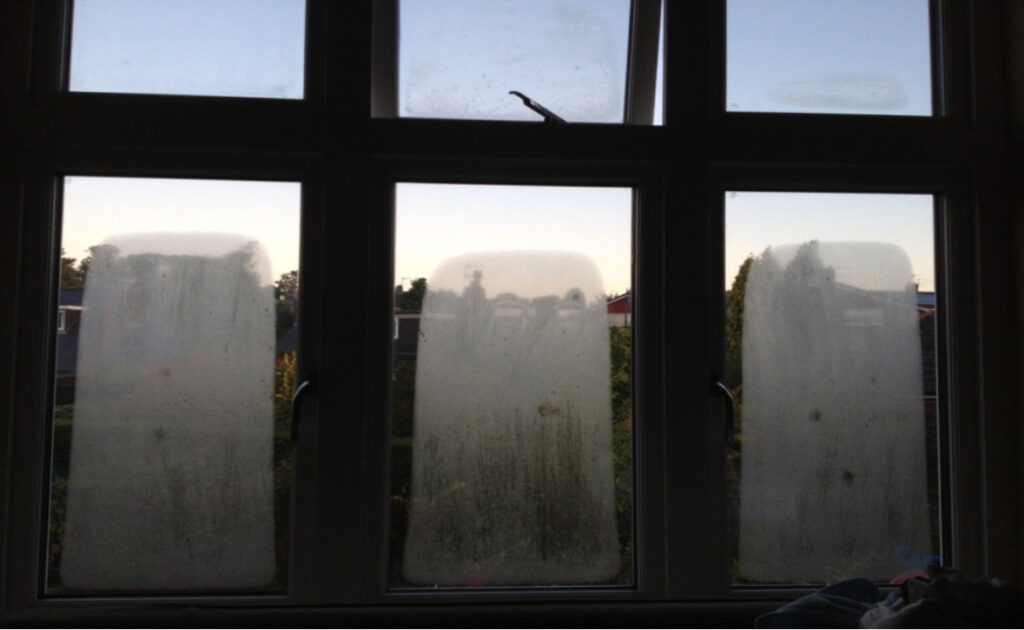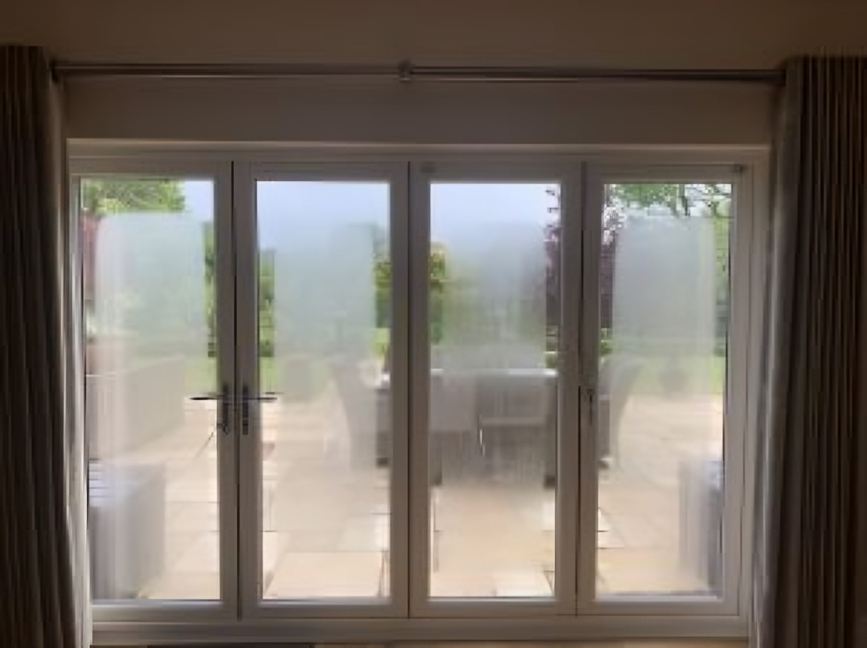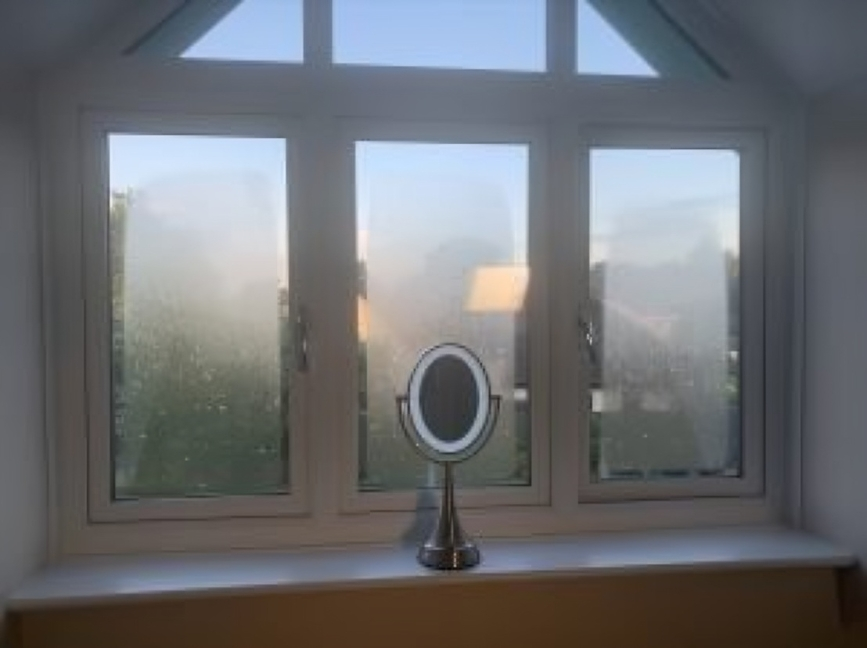External Condensation
External condensation may occur due to temperature differences and high humidity. It’s a common occurrence and typically harmless.

External Condensation
With advancements in glass thermal performance, external condensation on glazing has become more common, especially in high humidity and cold weather. This phenomenon is not a defect but an indicator that your windows are effectively retaining heat.
Why Does It Happen?
Modern glazing, with its low emissivity inner pane, reflects heat back into the building, preventing the outer pane from warming up. As a result, the outer pane can become cool, causing water vapor to condense on it under certain temperature and humidity conditions. This is more likely in spring and autumn, and it’s related to the dew point.
Comparing with Older Glazing
Traditional double glazing allowed more heat to escape, which warmed the outer pane. Today, to meet energy efficiency standards, new glazing technologies are designed to conserve heat, which can lead to external condensation. This is a common occurrence in colder regions and is accepted as part of high-performance glazing systems.
Why Does It Vary?
Condensation can appear on some windows or panes but not others due to variations in shading, orientation, or nearby objects like trees or overhangs. These factors affect the surface temperature of the glass, making condensation unpredictable.


What to Do
External condensation indicates efficient glazing and energy conservation. It usually dissipates with exposure to sunlight or a breeze. Over time, atmospheric and climatic conditions may reduce or eliminate this phenomenon. If the appearance is bothersome, you may use a mild abrasive cleaner like cerium oxide to minimize surface marks. Clean the glass first, then apply cerium oxide with a wet cloth. Test this method on a small area first.
For more information, consult major glass manufacturers or the Glass & Glazing Federation for advice and guidance.
